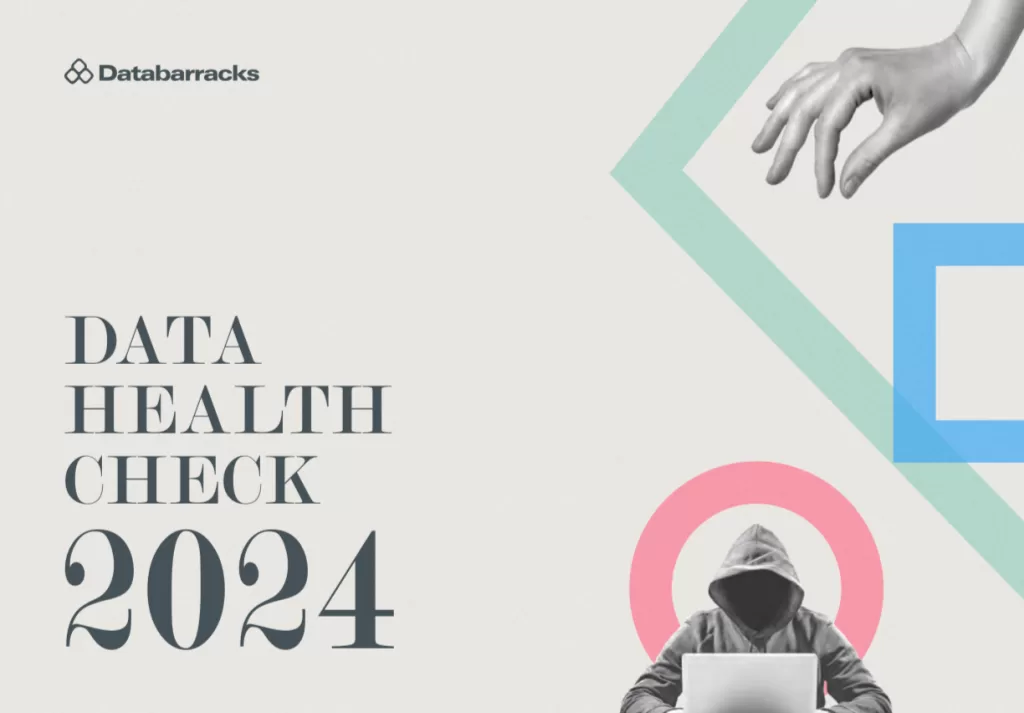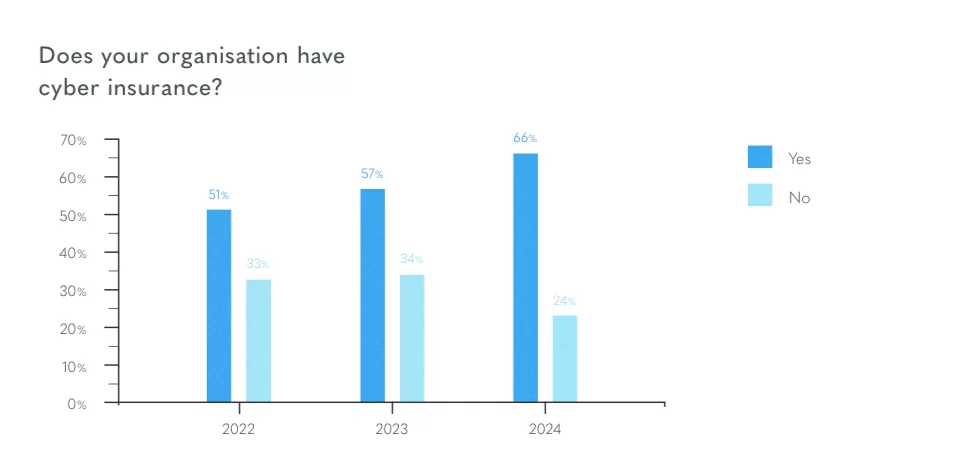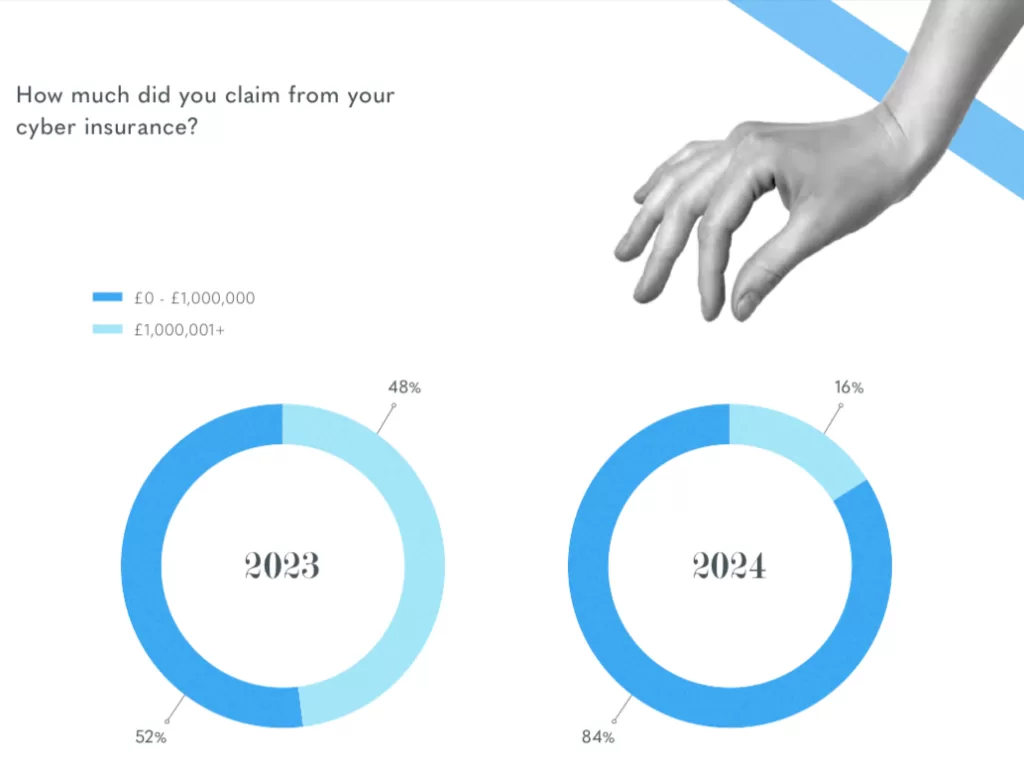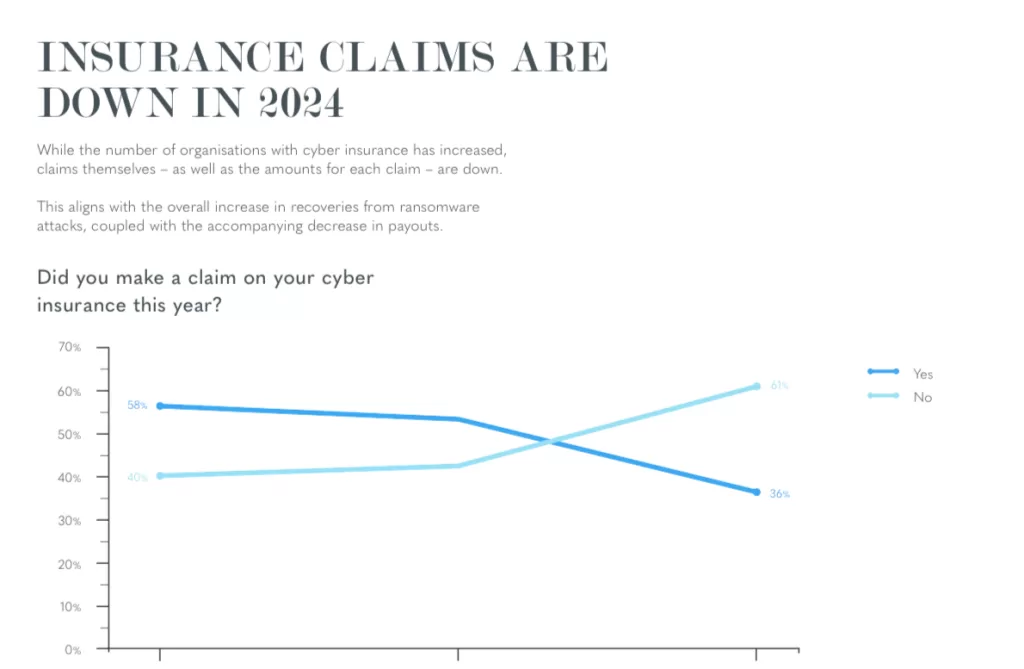The latest Data Health Check report by Databarracks reveals a marked decline in cyber insurance claims. That indicates a significant shift in the cyber landscape. This finding comes despite the increased adoption of cyber insurance policies among UK businesses. This trend underscores a growing resilience in the face of cyber threats, as more organizations successfully recover from ransomware attacks without resorting to ransom payments. You can get the full report here. Our takeaways are as follows.
The 2024 edition of Databarracks’ annual survey, which gathers insights from 500 IT decision-makers across the UK, highlights a striking 66% of respondents who reported having cyber insurance, a sharp rise from 51% over the past two years. However, the number of businesses filing claims has dropped dramatically. Only 36% of those surveyed made a claim this year, down from 58% in 2022. This decline is likely due to increasing organizations choosing to recover from backups rather than paying ransoms.

James Watts, Managing Director at Databarracks, shed light on this development in a press release accompanying the report. He explained, “We have long speculated about the negative effect of cyber insurance policies on ransomware. Organizations were incentivized to pay ransoms instead of refusing, leading to a vicious cycle of payments. The nascent cyber insurance market suddenly became unsustainable.”
Watts pointed out that a significant change occurred when cyber insurance prices surged, and insurers imposed stricter requirements to obtain coverage. These changes forced organizations to enhance their preparedness and cyber resilience. “The result was that the bar of preparedness was raised,” Watts noted, emphasizing the role of stringent insurer requirements in promoting better backup strategies and business continuity plans.
Ransomware
The report reveals that twice as many organizations can now recover from ransomware attacks using backups, a shift that has dramatically reduced the need to pay ransom. Claims for amounts exceeding £1 million have dropped from 48% to just 16% in 2024, illustrating the growing effectiveness of these recovery strategies.
Watts noted, “While paying may seem like the quick, low-cost solution, that’s rarely the case. There’s no guarantee that you will get your data back, and choosing to pay also cements your reputation as an easy target.” His comments reflect a broader industry sentiment that ransomware payments often perpetuate the cycle of attacks, making it crucial for organizations to focus on recovery rather than capitulation.
The findings from the Data Health Check report support this perspective, highlighting that 54% of organizations that faced ransomware attacks in 2024 managed to recover from backups without paying the ransom. This represents a significant increase from previous years and suggests a positive trend toward self-reliance and robust cybersecurity practices.
Moreover, the report underscores the importance of having comprehensive business continuity plans. Nearly 89% of respondents expressed confidence in their organization’s ability to respond effectively in a crisis, up from 82% in the previous year. This growing confidence reflects the increased emphasis on preparedness and testing against cyber threats, which have become central components of organizational resilience.
One of the key insights from the report is the critical role that air-gapping plays in protecting backups from cyberattacks. While 75% of organizations reported having some form of air-gapping in place, smaller businesses were less likely to employ such measures, with 58% admitting they had no air-gapping at all. This divergence highlights the need for smaller enterprises to bolster their defenses to match the resilience of larger companies.
Artificial Intelligence
In addition to recovery strategies, the report also touches on the emerging role of artificial intelligence (AI) in cybersecurity. While 63% of respondents view AI as a greater benefit than a threat, smaller companies remain apprehensive about its potential risks. This dichotomy suggests that while AI offers significant opportunities for enhancing security, it also poses new challenges that organizations must address.
The report’s findings also emphasize the impact of cyberattacks on employment, with 37% of respondents indicating that cyber incidents led to job losses within their organizations. This statistic underscores the serious consequences of cyber breaches, not only for business operations but also for personnel.
The Data Health Check 2024 paints a nuanced picture of the evolving cybersecurity landscape. The decline in cyber insurance claims and the rise in successful ransomware recoveries signals a shift toward greater resilience and self-reliance among UK businesses. As organizations continue to enhance their cyber defenses, the role of cyber insurance is also evolving from merely providing financial protection to actively encouraging better preparedness and recovery strategies.
Watts aptly summarized this shift: “This is the influence we hope insurance can have on the cyber landscape. Legislating and banning all payments is problematic for a number of reasons, so one of the few factors that could disrupt the growth of ransomware is this shift in the industry.”
Source: Data Health Check report by Databarracks
Other News: 1/3 of Ransomware Victims Did Not Recover Data Even After Paying Up(Opens in a new browser tab)
Other News: City of Flint online & phone services victimized by ransomware attack.


